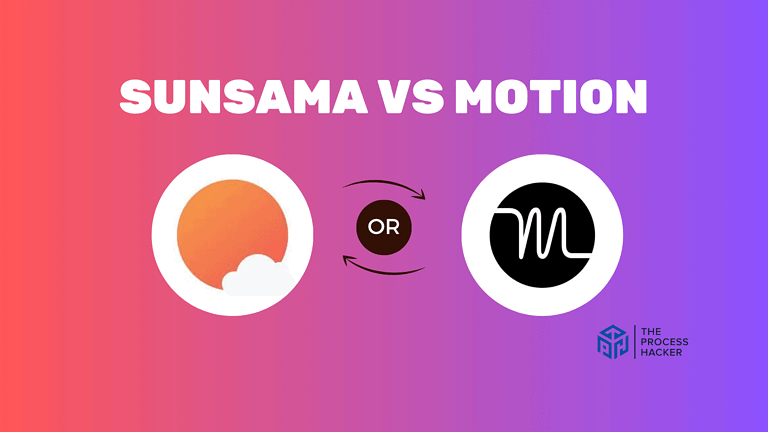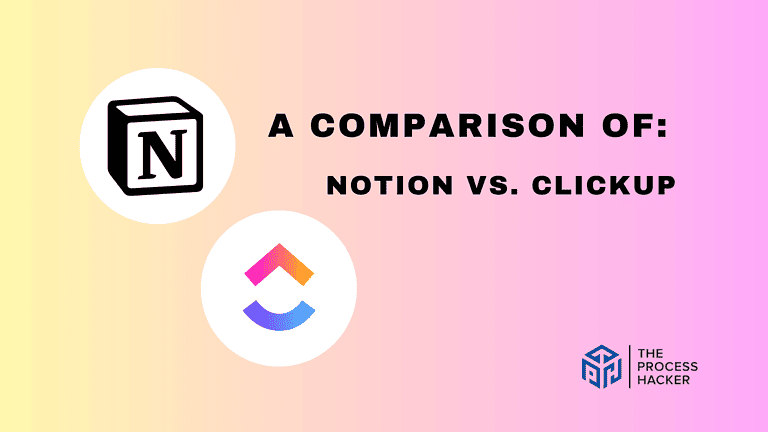How to Think Critically Using Kepner Tregoe Situation Appraisal
Have you ever found yourself overwhelmed by the multitude of decisions and priorities you face every day?
Whether you’re steering a startup, managing a team, or simply trying to juggle life’s daily demands, the ability to sift through complexities and pinpoint what truly matters can set you apart. This is where the Kepner-Tregoe Situation Appraisal method comes into play.
Developed by Charles H. Kepner and Benjamin B. Tregoe, the Kepner-Tregoe method is a structured technique for managing complex decisions and problems. Its proven framework enhances clarity, reduces uncertainty, and allows more informed decision-making, which is incredibly valuable in today’s fast-paced and intricate environments.
In this article, you’ll learn the ins and outs of the Kepner-Tregoe Situation Appraisal method. More importantly, you’ll discover how it can be applied to your daily challenges, helping you prioritize effectively and confidently make decisions.
So, let’s dive in and start shaping your path to masterful decision-making!
What is Kepner Tregoe Situation Appraisal?
Kepner Tregoe Situation Appraisal is a structured approach to analyzing and addressing complex situations. Think of it as a mental toolkit designed to help you break down challenges into smaller, more manageable pieces.
At its core, Situation Appraisal beginnings help you clarify what’s happening, why it matters, and what you should do about it. It’s a process that guides you through identifying the most pressing concerns, understanding their possible causes, and developing a clear action plan.
Whether you’re facing a sudden crisis or tackling long-standing issues, this method systematically approaches any situation with clarity and confidence.
Why Should You Use Kepner Tregoe Situation Appraisal?
In today’s dynamic environment, where decisions can have far-reaching implications, it’s crucial to have a structured approach to problem-solving. The Kepner Tregoe Situation Appraisal method offers just that, allowing you to dissect complex scenarios and make strategic decisions that align with your goals.
- Enhanced Clarity: It helps you clarify the situation, ensuring that you’re addressing the real issues, not just the symptoms.
- Better Prioritization: You can distinguish between urgent issues and those that can wait, allocating your resources more effectively.
- Risk Management: You can avoid pitfalls and undesirable consequences by systematically analyzing potential risks and outcomes.
- Effective Communication: It facilitates clearer communication within teams, ensuring everyone understands the issues, the decisions made, and the reasons behind them.
By adopting the Kepner Tregoe Situation Appraisal, you position yourself to tackle challenges with a clear, strategic framework. This method doesn’t just help you solve problems—it enhances your overall decision-making capabilities, making it an indispensable tool for anyone looking to excel in managing projects, teams, or even their daily life.
How to Use Kepner Tregoe Situation Appraisal
Kepner Tregoe Situation Appraisal unfolds as a four-step process, each phase building upon the last to guide you toward informed decisions and effective action. This structured approach ensures you cover all the essential bases, leaving no room for overlooked details or rash conclusions.
Let’s dive into the core of this method, exploring each step in detail so you can apply it to your own challenges.
#1) Identify Issues
The first and most crucial step in the Kepner Tregoe Situation Appraisal process is clearly defining the issues you’re facing. This isn’t about jumping to conclusions or fixating on surface-level symptoms. Instead, it’s about systematically uncovering the root of the problem.
To effectively identify issues, ask yourself the following questions:
- What’s the big picture? Clearly define the primary areas of concern.
- What specific problems are we dealing with? Identify any issues related to your main focus. Consider deviations from the norm, decisions that need to be made, plans to implement, changes on the horizon, potential threats, or exciting opportunities.
- Are we all on the same page? Make sure each concern is crystal clear and specific. If it’s already clear, leave it as is. Otherwise, ask:
- What smaller issues are part of this more significant concern?
- Can this be solved with a single decision or action?
- What exactly do we mean by…? (Fill in the blank with the concern.)
- What needs to happen? Create a list of statements that clearly outline the actions required. Are these actions about addressing a deviation, making a choice, dealing with a threat, seizing an opportunity, or simply getting something done?
#2) Set Priority
Now that you have a clear picture of the issues at hand, the next step is to prioritize them. Not all problems are created equal; some require immediate attention more than others. Prioritization allows you to allocate your time and resources effectively, ensuring that you address the most critical concerns first.
Leverage your expertise and experience to identify the top priorities. Ask yourself:
- Which concerns should be addressed first?
- How should we order the remaining concerns?
Data-Driven Evaluation
Gather concrete evidence to support your prioritization. Evaluate each issue based on its current impact, future impact, and timeframe.
First, assess each factor individually, classifying them as High, Medium, or Low. You can further refine your assessment by adding a plus (+) or minus (-) to each rating.
Then, consider the combination of these factors to determine the overall priority. Again, classify them as High, Medium, or Low, with the option to add pluses or minuses for additional precision.
During this evaluation, consider:
- Current Impact: How does this issue affect employees, safety, costs, customers, productivity, and reputation? What evidence supports this assessment?
- Future Impact: What are the potential long-term consequences of this issue? What evidence substantiates your assessment?
- Timeframe: How urgent is this issue? When will its effects become apparent? What evidence supports your estimation?
#3) Plan Next Steps
With a prioritized list of issues in hand, you’re ready to map out your course of action. This step involves developing a strategic plan that outlines the specific actions needed to address each issue effectively.
When planning your next steps, it’s essential to address each issue methodically:
Create a Plan to Resolve Issues
Start by identifying the necessary steps or actions. Consider what specific moves you need to make to resolve the issue. Here are some questions to guide you:
- What analytic process is required for resolution? Does this situation require a deviation analysis because the cause is unknown? Or perhaps a decision analysis because you need to make a choice? Maybe it’s a proactive analysis to plan protective actions? If the path forward is clear, you might just need to act without further analysis.
- How comprehensive does the resolution need to be? Gauge the extent of the actions required. Is this a comprehensive fix requiring detailed planning, or can a straightforward solution suffice?
- Record what you will do. Documenting your strategy is vital. This not only helps maintain clarity and focus but also ensures accountability and facilitates effective follow-up.
By systematically working through these steps, you ensure that every priority issue is addressed and that your approach is both thorough and efficient. This systematic planning not only clarifies the path forward but also maximizes the effectiveness of your actions.
#4) Plan Involvement
While taking ownership of your decision-making process is important, consider the power of collaboration. Involving others in the power of Situation Appraisal can bring valuable insights, diverse perspectives, and a sense of shared responsibility.
To plan involvement effectively, consider the following:
Determine Who Needs to Help
Think about who needs to be involved to achieve the best possible outcome. This could include individuals within your company who bring essential information, those who can identify potential causes of issues, or team members who will help implement the solution.
- Identify Key Roles: Who within your organization is crucial for providing information? Who will carry on with the potential problem analysis? Understanding these roles helps you assign responsibilities effectively.
- Set Deadlines: Decide when each part of the process needs to be completed. Setting clear deadlines ensures that everyone knows what is expected and by when.
- Engagement for Commitment and Approval: Consider who needs to approve the actions and who will be committed to carrying them out. Getting buy-in from these individuals early in the process can smooth the path for implementation and ensure that the plan aligns with broader business goals.
By thoughtfully planning who to involve, you can enhance the effectiveness of your situation appraisal and ensure that your business leverages the full range of talents and insights available within your organization.
Key Considerations For Successful Problem Solving
While the Kepner Tregoe Situation Appraisal provides a structured framework, your success ultimately depends on how well you apply it. Here are a few additional insights to keep in mind:
- Embrace a Holistic View: Don’t get tunnel vision on individual issues. Consider how each concern interacts with others and how your decisions might impact the overall situation.
- Think Long-Term: While addressing immediate problems is crucial, remember the bigger picture. Consider the long-term consequences of your decisions and strive for sustainable solutions.
- Be Adaptable: Situations are dynamic, and your approach should be, too. You may need to adjust your plan and evaluate alternatives as new information emerges or circumstances change.
- Cultivate a Learning Mindset: Every challenge is an opportunity for growth. Use each experience to refine your problem-solving skills and get a deeper understanding of the Kepner Tregoe method.
To maximize your success, ask yourself these pivotal questions throughout the process:
- What situations represent deviations, choices, threats, opportunities, or things that need to get done?
- Which concerns require clarification or separate actions?
- What is their relative priority regarding current and future impact, as well as the time frame?
For highest priority concerns…
- What process or action is needed?
- Who should be involved in controlling the issue?
Final Thoughts on Kepner Tregoe Situation Appraisal

Kepner Tregoe Situation Appraisal is more than just a problem-solving method; it’s a mindset shift that empowers you to approach challenges with clarity, confidence, and critical thinking skills. By mastering this systematic approach, you equip yourself with a powerful tool to navigate the complexities of modern life and achieve your goals.
Remember, the true power of the Kepner Tregoe method lies not just in following the steps but in internalizing the principles and applying them consistently. With practice, this approach will become second nature, transforming the way you perceive and respond to any situation.
For other Kepner Tregoe frameworks, read these articles:
I encourage you to embrace this robust framework and experience the positive impact it can have on your decision-making and problem-solving skills. Take the time to experiment with it, adapt it to your unique circumstances, and witness firsthand the clarity and confidence it brings to your life.






